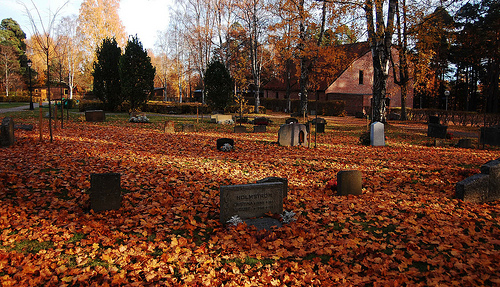The growing problem of corpse disposal
It's not just an issue for murderers anymore
Who hasn't wondered about the best way to dispose of a body? Murderers in fiction and real life come up with all sorts of creative methods of body disposal. But the issue of corpse disposal is increasingly becoming a concern in legitimate situations. If Dexter needs to figure out where to hide all the bodies, so does your neighborhood funeral home.
The Earth is small, and getting smaller. Arable land is at a premium. To many people it seems like a waste to spend so much of it on the dead. Not to mention all the toxic chemicals which are used in corpse preservation and buried along with poor old Grandma.
For those who are concerned about climate change and their carbon footprint, cremation has a surprisingly high environmental impact. Cremating a body takes 23 liters of fuel, four hours of combustion, and "emits noxious gases including dioxin, hydrochloric acid, sulfur dioxide, and carbon monoxide, as well as mercury and other toxic metals into the atmosphere."
And you still have the issue of having to either make room for an urn full of ashes, or find a way to dispose of them. Spreading human ashes is not a safe bet. Because they are considered human remains, federal regulations are very strict on this point. Every time someone spreads the ashes of a loved one on a Disneyland ride, Disney has to shut down the attraction and clean up the ashes with a HEPA vacuum.
Natural burial is becoming popular among the die-hard environmental fans. Natural burial is just what it sounds like: bodies are buried without any coffin or preservation, and allowed to decompose naturally.
Another new option is called "alkaline hydrosis." By combining an alkaline solution of potassium hydroxide with high heat and pressure, within a few hours a corpse can be reduced to "a sterile coffee-colored liquid the consistency of motor oil that can be safely poured down the drain."
(If this brings to mind Walter White's preferred means of body disposal, turns out hydrofluoric acid is a bust in real life.)
If you prefer something more poetic, Swedish biologist has pioneered a method she calls "promession," in which the corpse is basically freeze dried, pulverized, then mixed in with soil and used to fertilize a garden.
A related method is the Infinity Burial Project, which puts the corpse into a cotton slipcase filled with mushroom spores. The body is placed in a cool, dark, damp place, which encourages the mushrooms to sprout and consume the body. (Very Hannibal of them.)
